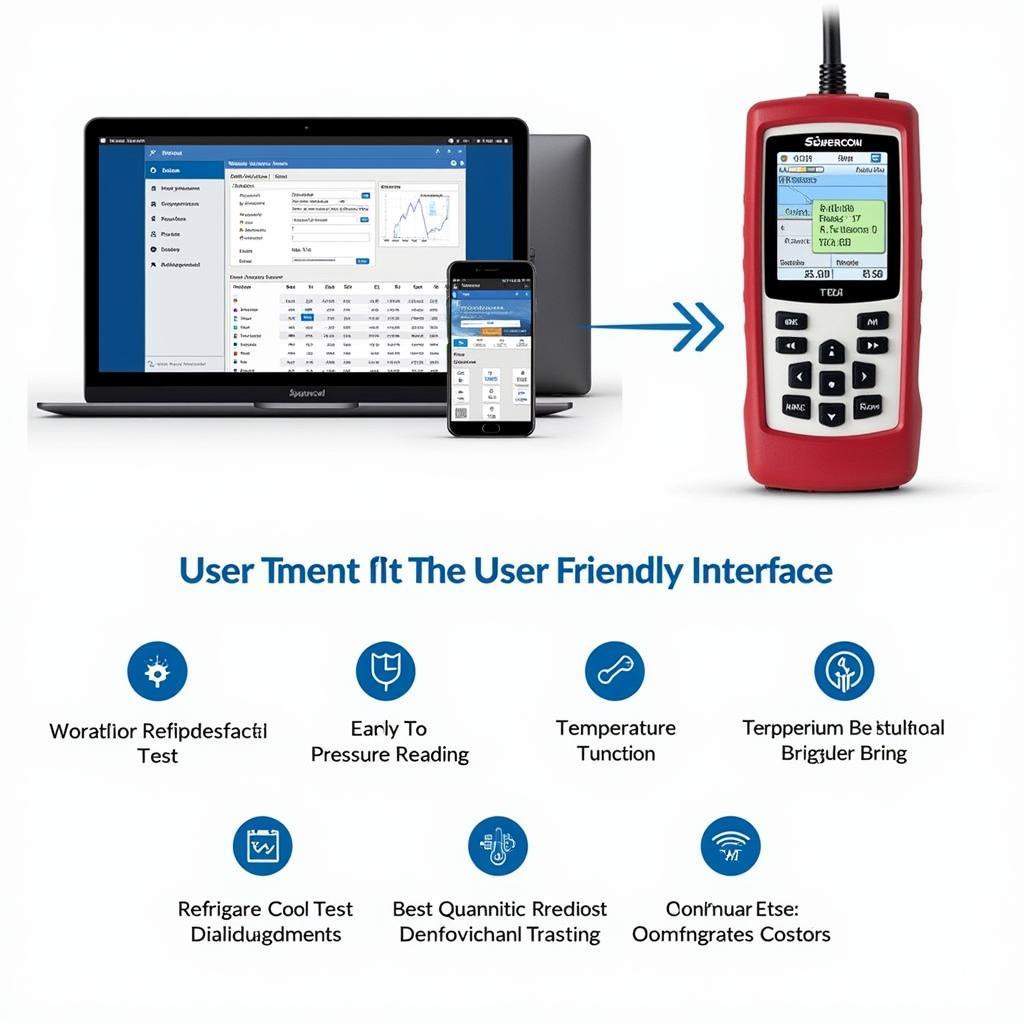An Abs Sensor Diagnostic Tool is an essential device for any mechanic or car enthusiast who wants to diagnose and repair issues with their vehicle’s anti-lock braking system (ABS). A faulty ABS sensor can lead to a number of problems, including reduced braking performance, increased stopping distances, and even complete brake failure.
Understanding ABS Sensors and Their Importance
Before diving into the specifics of diagnostic tools, it’s crucial to understand what ABS sensors are and why they are vital for your safety. In essence, ABS sensors are the eyes of your anti-lock braking system. They are responsible for monitoring the speed of each wheel and relaying this information to the ABS control module.
This data is crucial for the ABS to function correctly. If one or more sensors send incorrect signals, the ABS may not engage properly, potentially leading to dangerous skidding or loss of control during hard braking.
Common Symptoms of a Faulty ABS Sensor
How do you know if your ABS sensor needs attention? Here are some telltale signs:
- Illuminated ABS Warning Light: This is the most obvious indicator. When the ABS light on your dashboard comes on, it signals a potential problem with the system, often a failing ABS sensor.
- Erratic Braking Behavior: Does your brake pedal pulsate unusually, especially during hard braking? This can be a sign of a malfunctioning ABS sensor interfering with the system’s ability to modulate brake pressure.
- Wheel Speed Sensor Errors: Modern vehicles often display specific error codes related to wheel speed sensors. These codes can be read using a bsod diagnostic tool, providing valuable insight into potential ABS sensor issues.
Choosing the Right ABS Sensor Diagnostic Tool
Selecting the appropriate diagnostic tool is essential for accurate diagnosis and repair. There’s a wide range available, catering to various needs and budgets.
1. Basic Code Readers:
- Functionality: These entry-level tools can read and clear basic ABS trouble codes.
- Ideal For: Car owners looking for a simple way to identify potential ABS issues.
2. Advanced Scan Tools:
- Functionality: Offer more in-depth diagnostics, including live data streaming from ABS sensors, allowing you to monitor sensor readings in real time.
- Ideal For: Home mechanics and small workshops dealing with a range of vehicle makes and models.
3. Professional-Grade Diagnostic Systems:
- Functionality: Provide the most comprehensive diagnostic capabilities, often including access to manufacturer-specific ABS systems and advanced troubleshooting functions.
- Ideal For: Professional repair shops and dealerships requiring in-depth diagnostic and programming capabilities.
Using an ABS Sensor Diagnostic Tool: A Step-by-Step Guide
Once you have the right tool, follow these general steps to diagnose a potential ABS sensor issue:
- Locate the OBD-II Port: This port is usually located under the driver’s side dashboard.
- Connect the Diagnostic Tool: Plug the tool into the OBD-II port.
- Turn the Ignition On: Turn the key to the “on” position but don’t start the engine.
- Access the ABS System: Navigate to the ABS system menu on your diagnostic tool.
- Read Trouble Codes: Retrieve any stored ABS trouble codes. These codes will provide valuable clues about the specific sensor or circuit causing the problem.
- Clear Trouble Codes: After noting the codes, clear them from the system’s memory.
- Test Drive: Take your vehicle for a short drive to see if the ABS light returns or if the issue persists.
- Re-read Codes: If the problem persists, reconnect the tool and re-read the codes. Any new codes that appear can help pinpoint the faulty sensor or component.
“Remember, while diagnostic tools are powerful, they are just one piece of the puzzle. A thorough visual inspection of the ABS sensors, wiring, and related components is crucial for accurate diagnosis.” – John Miller, Senior Automotive Engineer at ScanToolUS
Beyond Diagnostics: Repair and Maintenance
After identifying a faulty ABS sensor using your diagnostic tool, you have several options:
- Replacement: In most cases, replacing the faulty sensor is the most effective solution.
- Repair: If the damage is minor, such as a broken wire, repair might be possible.
- Professional Help: If you’re uncomfortable performing the repair yourself, seek assistance from a qualified mechanic.
FAQs about ABS Sensor Diagnostic Tools
Q1: Can I use any OBD-II scanner for ABS diagnostics?
Not all OBD-II scanners are created equal. Some basic models might only read engine codes, while others, like certain safe browsing diagnostic tool, are specifically designed for a different purpose. Ensure the tool you choose explicitly mentions ABS diagnostic capabilities.
Q2: Are expensive diagnostic tools always better?
Not necessarily. The “best” tool depends on your specific needs and budget. A best vehicle diagnostic tool review can help you find one that balances features and affordability.
Q3: How often should I have my ABS system checked?
It’s generally a good idea to have your ABS system inspected annually or as part of your vehicle’s regular maintenance schedule.
Conclusion
An ABS sensor diagnostic tool is an invaluable investment for anyone who wants to keep their vehicle’s braking system in optimal condition. By understanding how to use these tools effectively and by recognizing the symptoms of a faulty ABS sensor, you can ensure safer driving experiences for yourself and others on the road.
For expert advice on diagnostic tools or assistance with any ABS-related issues, feel free to contact ScanToolUS at +1 (641) 206-8880 or visit our office at 1615 S Laramie Ave, Cicero, IL 60804, USA.


